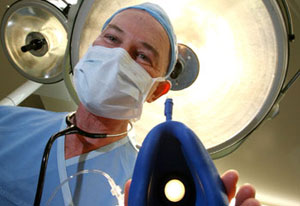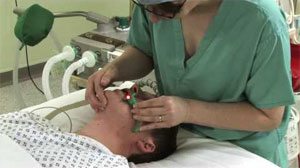Anaesthetic Technician
Tasks & duties

Anaesthetic technicians may do all or some of the following:
-
check and set up life support and anaesthetic machines by following specific procedures
-
check and prepare the equipment required, such as breathing circuits, infusion pumps, positioning and warming equipment
-
order and prepare medical supplies
-
make sure equipment and consumables are maintained in a safe, ready-to-use condition
-
meet patients and explain procedures to them, and provide support and reassurance
-
check whether patients have any medical conditions that could create problems under anaesthesia
-
document procedures and results
-
assist with placement of breathing tubes and the insertion of intravenous lines in patients
-
assist the anaesthetist to administer anaesthetics to patients
-
administer intravenous fluids and basic anaesthetic agents to patients under the supervision of the anaesthetist
-
watch patients and monitor their vital signs before, during and after the operation
-
help to wake patients after their treatment
-
make sure that all equipment is disposed of, decontaminated or sterilised as appropriate, and that all areas are cleaned
-
ensure that patients' rights and confidentiality are respected
-
take blood samples
Specialisations
Anaesthetic technicians can specialise in departments and procedures where anaesthetics are given.
Specialisation areas include:
-
paediatrics
-
neurosurgery
-
cardiology
-
emergency and resuscitation
-
liver transplants
-
autologous blood transfusions
Skills & knowledge

Anaesthetic technicians need to have:
-
knowledge of operating theatre procedures and protocols
-
knowledge of anaesthetic machines, life support machines, and drugs and equipment
-
knowledge of emergency procedures, and the ability to administer cardio-pulmonary resuscitation (CPR)
-
understanding of human anatomy, physiology and biophysics
-
the ability to identify medical conditions that may put the client at risk during anaesthesia, such as an adverse drug reaction
-
an awareness of the likely consequences and treatment required in these situations
-
good communication and people skills to relate to patients and team members
-
understanding of a range of different cultures
-
technical skills
-
measuring skills
-
observational skills
-
computer skills for operating computerised machines used in hospital theatres
Entry requirements
To become an anaesthetic technician you need to complete the Diploma in Applied Science (Anaesthetic Technology) through the Auckland University of Technology. This is a three-year extramural course that involves 6,240 hours of on-the-job training.
The extramural course and on-the-job training hours can be shortened if you have previous appropriate clinical experience. Trainees must be employed in an NZATS-approved training hospital.
Secondary education
To enter a training position you need to have NCEA Level 2 physics and NCEA Level 3 biology or equivalent. Other secondary school-level science subjects may also be helpful.
Tertiary education
If you have not completed the necessary secondary education science requirements, you can do catch-up courses in human anatomy and physiology at tertiary level.
Training on the job
Most hospitals and clinics offer anaesthetic technicians ongoing training. This can include regular refresher courses in key areas such as cardio-pulmonary resuscitation (CPR), or specialised areas such as advanced resuscitation techniques and autologous blood transfusion (where a client donates blood so that it is available to them if they require a blood transfusion during future surgery).
Medical companies also provide anaesthetic technicians with training on the use of new drugs, machines and medical equipment.
Registration
To become registered as an anaesthetic technician you need to have a Certificate of Proficiency from the New Zealand Anaesthetic Technicians' Society Inc.
Useful experience
Work in an operating theatre is the most useful experience for anaesthetic technicians; for example, as a registered or enrolled theatre nurse. Other hospital or medical experience, such as working as a registered nurse or intensive care technician, is also very useful.
Video
From just a job on you tube
Related courses
Anaesthesiology
For more information, please refer to Career Services.
Document Actions
